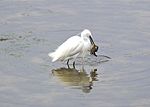Bentak station
Euskotren Trena stationsIrunRailway stations in GipuzkoaRailway stations in Spain opened in 1912Spain rail transport stubs ... and 1 more
Wikipedia page with obscure subdivision

Bentak is a railway station in Irun, Basque Country, Spain. It is owned by Euskal Trenbide Sarea and operated by Euskotren. It lies on the San Sebastián-Hendaye railway, popularly known as the Topo line. The Cercanías San Sebastián station Ventas de Irun is located adjacent to the Euskotren station.
Excerpt from the Wikipedia article Bentak station (License: CC BY-SA 3.0, Authors, Images).Bentak station
Elizatxo hiribidea,
Geographical coordinates (GPS) Address Nearby Places Show on map
Geographical coordinates (GPS)
| Latitude | Longitude |
|---|---|
| N 43.330583333333 ° | E -1.8169444444444 ° |
Address
Elizatxo hiribidea
20300 , Katea / Ventas
Autonomous Community of the Basque Country, Spain
Open on Google Maps










